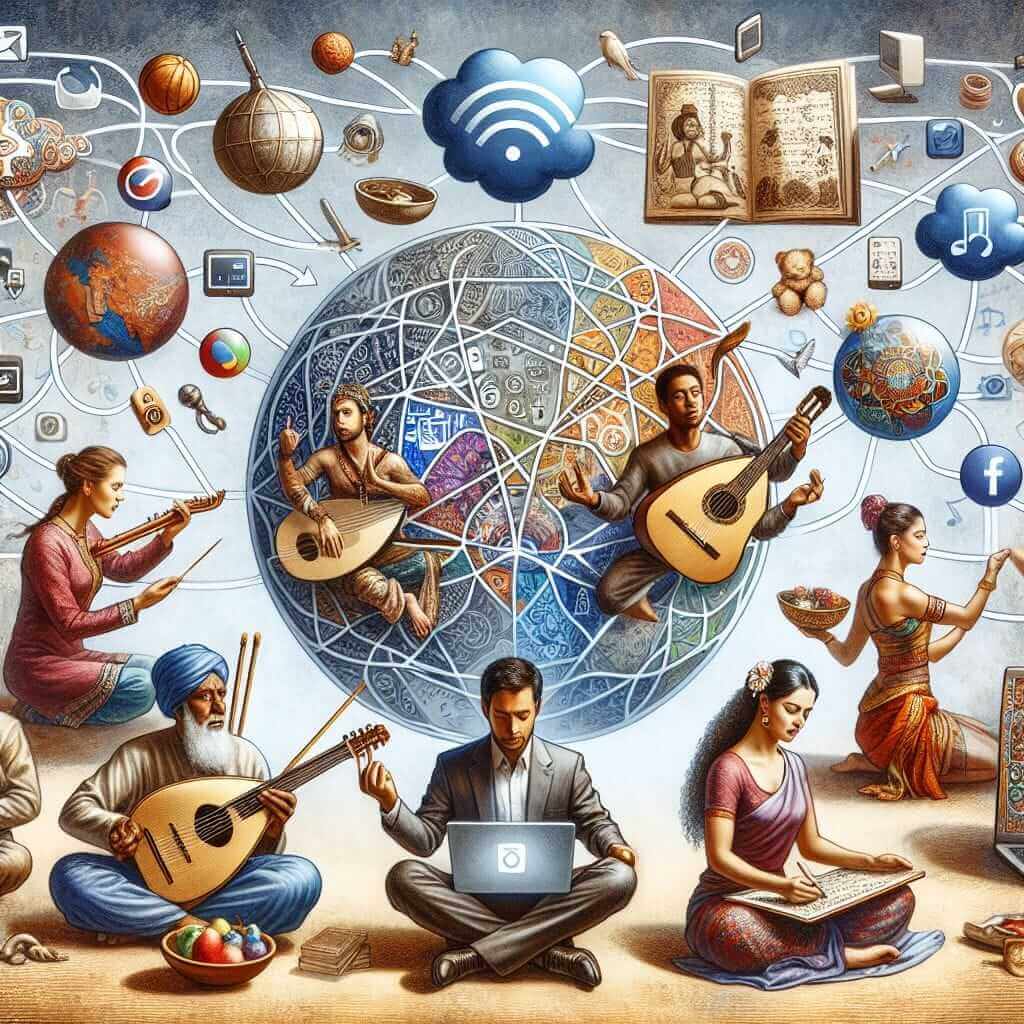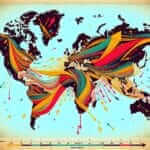The IELTS Reading test is a crucial part of the IELTS exam, designed to assess a candidate’s reading skills through various texts and questions. Given the dynamic nature of communication in the digital age, the topic “Cultural impacts of digital communication” is highly relevant. This theme has seen increasing prominence over the years, reflecting global shifts towards digital media. Based on past trends, there is a notable possibility that similar topics may appear in future IELTS exams.
In this article, I will present a mock IELTS Reading test focused on the cultural impacts of digital communication. This will include a reading passage, a variety of question types, detailed answers, and explanations. Additionally, I will provide insightful tips and essential vocabulary to aid your preparation.
Reading Passage
Title: Cultural Impacts of Digital Communication
In today’s interconnected world, digital communication has transformed how cultures interact and evolve. The advent of the internet, social media, and various digital platforms has both positive and negative effects on cultural practices and identities.
The Integration of Cultures
One of the primary cultural impacts of digital communication is the integration of different cultures. Social media platforms enable individuals from diverse backgrounds to connect, share, and learn from each other. This dynamic exchange fosters multicultural understanding and tolerance. For example, the global dissemination of traditional cuisines, music, and art forms is facilitated by digital communication, promoting cultural appreciation and hybridity.
Preservation and Transformation of Cultural Practices
Digital communication plays a pivotal role in the preservation of cultural practices, especially among diaspora communities. Online platforms provide a space for cultural expressions and rituals which might otherwise be lost. However, this digital presence can also lead to the transformation of traditional practices. For instance, digital storytelling often adapts traditional narratives to suit new media formats, potentially altering their original essence.
Challenges and Criticisms
Despite the positive aspects, there are notable challenges associated with digital communication and culture. Cultural homogenization is a significant concern, where dominant cultures overshadow and diminish local traditions. Moreover, the digital divide exacerbates inequalities, as disadvantaged groups may lack access to the technology needed for cultural participation. Critics argue that this not only marginalizes these groups but also risks the loss of their unique cultural identities.
Digital media also raises issues of authenticity and intellectual property. The ease of sharing information can lead to cultural appropriation and unauthorized use of cultural artifacts. These issues highlight the need for ethical guidelines and respect for cultural heritage in the digital realm.
A Double-Edged Sword
Ultimately, digital communication is a double-edged sword in its cultural impact. It has the power to both enrich and endanger cultural identities. As we continue to navigate this digital landscape, it is crucial to balance the benefits of connectivity with the protection of cultural diversity.
 Cultural Impacts of Digital Communication
Cultural Impacts of Digital Communication
Questions
Multiple Choice
-
What is one positive effect of digital communication on culture?
- A. Cultural homogenization
- B. Cultural appropriation
- C. Multicultural understanding
- D. Loss of traditional practices
-
How does digital communication help preserve cultural practices?
- A. By diminishing local traditions
- B. Through online platforms for cultural expressions
- C. By overshadowing unique cultural identities
- D. Through unauthorized use of cultural artifacts
True/False/Not Given
-
Digital storytelling always maintains the original essence of traditional narratives.
- True
- False
- Not Given
-
The digital divide can marginalize disadvantaged groups.
- True
- False
- Not Given
Matching Headings
Match the paragraphs with the correct headings.
Headings:
i. Preservation and Transformation of Cultural Practices
ii. A Double-Edged Sword
iii. The Integration of Cultures
iv. Challenges and Criticisms
- Paragraph 2
- Paragraph 3
- Paragraph 4
- Paragraph 5
Sentence Completion
Complete the sentences with NO MORE THAN TWO WORDS from the passage.
- Online platforms provide a space for cultural expressions, helping _____.
- Critics argue that lack of access to technology exacerbates ____.
Answer Keys and Explanations
Multiple Choice
-
C. Multicultural understanding
- Explanation: The text highlights how digital communication fosters multicultural understanding and tolerance by enabling global connections.
-
B. Through online platforms for cultural expressions
- Explanation: The passage states that online platforms help preserve cultural practices by providing space for cultural expressions.
True/False/Not Given
-
False
- Explanation: The text mentions that digital storytelling often adapts traditional narratives, potentially altering their original essence.
-
True
- Explanation: The passage explicitly states that the digital divide exacerbates inequalities, marginalizing disadvantaged groups.
Matching Headings
-
iii. The Integration of Cultures
- Explanation: Paragraph 2 discusses how digital communication enables the integration of different cultures.
-
i. Preservation and Transformation of Cultural Practices
- Explanation: Paragraph 3 elaborates on how digital communication plays a role in both preserving and transforming cultural practices.
-
iv. Challenges and Criticisms
- Explanation: Paragraph 4 addresses the challenges such as cultural homogenization and the digital divide.
-
ii. A Double-Edged Sword
- Explanation: Paragraph 5 concludes by discussing the dual nature of digital communication’s impact on culture.
Sentence Completion
-
cultural expressions
- Explanation: This phrase directly fills the gap in the sentence based on the text.
-
inequalities
- Explanation: The phrase “exacerbates inequalities” is taken directly from the passage to complete the sentence.
Common Mistakes
- Misinterpreting the Question: Ensure you carefully read each question to understand what is being asked.
- Overlooking Keywords: Pay attention to keywords in the text that match the questions.
- Limited Vocabulary: Familiarize yourself with essential vocabulary related to the topic.
Important Vocabulary
- Diaspora (noun) /daɪˈæspərə/ – The dispersion of any people from their original homeland.
- Homogenization (noun) /həˌmɒdʒɪnaɪˈzeɪʃən/ – The process of making things uniform or similar.
- Cultural appropriation (noun) /ˈkʌltʃərəl əˌproʊpriˈeɪʃən/ – The adoption of elements of one culture by members of another culture.
Grammar Focus
- Relative Clauses: Used to add additional information about a noun. For example, “Online platforms, which enable cultural expressions, are vital.”
- Passive Voice: Used to emphasize the action rather than the doer. For example, “The essence can be altered by digital storytelling.”
Tips for a High Reading Score
- Practice Regularly: Regular practice with varied texts will improve your reading speed and comprehension.
- Skim and Scan: Learn to quickly identify key information within the text.
- Time Management: Allocate your time effectively, ensuring you have enough time to answer all questions.
By understanding and practicing these techniques, you can enhance your performance in the IELTS Reading section and achieve a higher score.


